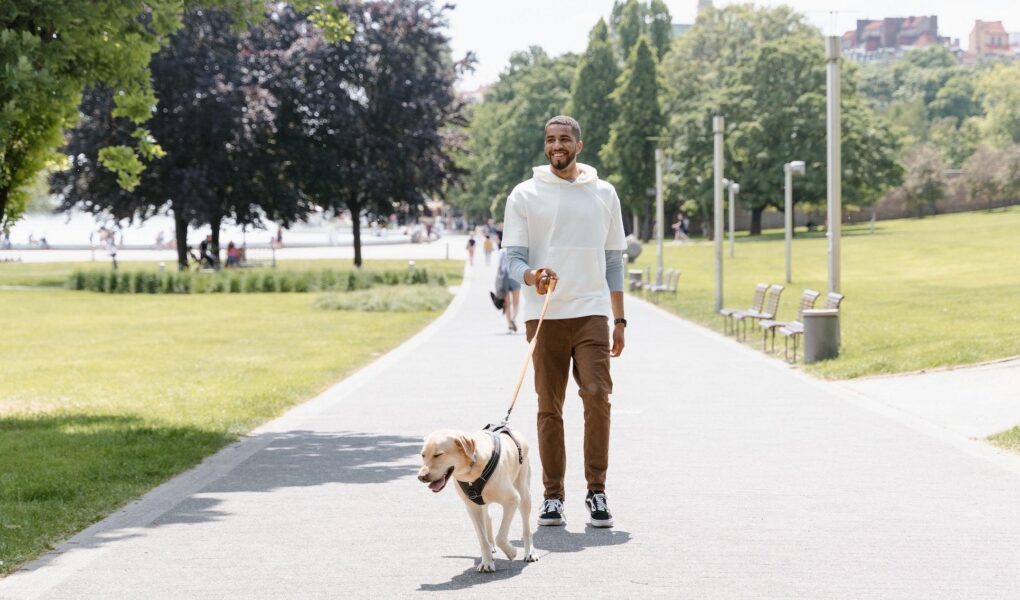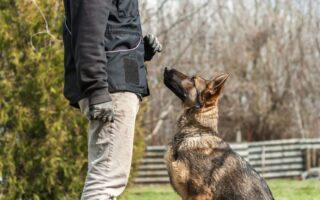The Art of Leash Walking: Transforming Outings into Adventures
When it comes to spending time with our four-legged companions, few activities are as universally cherished as a walk through the neighborhood or a romp in the park. However, for many dog owners, these excursions can quickly turn from delightful adventures into a test of patience and endurance. Enter leash walking training—an essential skill that not only fosters meaningful bonding between pet and owner but also promotes safety and socialization for both parties. In this article, we will delve into the nuances of leash walking training, exploring effective techniques, addressing common challenges, and highlighting the benefits of mastering this vital practice. Join us as we embark on a journey to transform your daily walks into joyous explorations, where communication and connection flourish with every step.
Table of Contents
- Understanding the Importance of Leash Walking for Your Dogs Well-Being
- Essential Techniques for Effective Leash Training: Building a Strong Foundation
- Common Challenges in Leash Walking and How to Overcome Them
- Enhancing the Experience: Tips for a Positive and Enjoyable Walk
- Q&A
- Wrapping Up
Understanding the Importance of Leash Walking for Your Dogs Well-Being
Walking your dog on a leash is not just a matter of control; it’s an essential component in nurturing their overall well-being. Engaging in regular leash walks provides dogs with daily mental and physical stimulation that enriches their lives. This activity helps in reducing anxiety, burning off excess energy, and promoting healthy social interactions with other dogs and humans. When your dog is accustomed to leash walking, you’re actively participating in enhancing their mood and preventing behavioral issues that may arise from boredom.
Moreover, leash walking offers the opportunity for you to teach your dog important commands and develop stronger bonds between the two of you. Through consistent practice, dogs can learn to associate walking on a leash with positive experiences, which ultimately encourages good behavior. To maximize the benefits of leash walking, consider these key aspects:
- Routine: Establish a regular walking schedule to create familiarity.
- Training: Incorporate basic commands to enhance control during walks.
- Interaction: Allow sniffing and exploring while maintaining a safe environment.
Essential Techniques for Effective Leash Training: Building a Strong Foundation
When embarking on the journey of leash training, it’s crucial to establish a solid groundwork that caters to both your dog’s instincts and your own expectations. One of the most effective techniques is to reward-based reinforcement, which encourages desired behaviors through positive outcomes. Utilize treats, praise, or play as incentives whenever your dog walks nicely beside you. Additionally, practicing consistency in your commands and responses helps your dog learn what you expect. Dogs thrive on routine, so ensure that the commands for walking are the same each time to avoid confusion and promote better understanding.
Another key aspect of effective leash training is proper equipment. Selecting the right collar or harness not only affects your dog’s comfort but also influences their willingness to walk beside you. Consider options like a front-clip harness, which can discourage pulling by applying pressure to the chest rather than the neck. It’s equally important to maintain a relaxed leash tension; a taut leash can signal to your dog that they are to pull ahead. Incorporating regular training sessions into your daily routine will reinforce these lessons over time. Aim for short, engaging walks where you can practice the skills you’ve introduced, ensuring that each outing becomes an opportunity for learning and bonding.
Common Challenges in Leash Walking and How to Overcome Them
Many dog owners encounter specific obstacles while training their pets for leash walking, which can be frustrating and discouraging. Common issues include pulling, where the dog lunges ahead and disregards commands, and distractions from other animals or people. Other challenges might be related to fear or anxiety, where dogs exhibit reluctance or resistance to moving forward. Additionally, some dogs may exhibit excessive excitement, making it difficult to maintain control. Tackling these challenges requires patience, consistency, and specific strategies tailored to your dog’s temperament.
To overcome these common hurdles, consider these effective approaches:
- Use Positive Reinforcement: Reward your dog with treats or praise when they walk calmly beside you.
- Choose the Right Equipment: A comfortable, well-fitted harness can help control pulling without causing discomfort.
- Practice desensitization: Gradually expose your dog to distractions in a controlled environment before venturing out into busier settings.
- Break down the training: Start with short walks in a quiet area, gradually increasing the duration and complexity as your dog improves.
Each of these methods can effectively address the specific challenges your dog may pose during leash training, fostering a more enjoyable experience for both you and your furry friend.
Enhancing the Experience: Tips for a Positive and Enjoyable Walk
To make every walk a joyous adventure, it’s essential to cultivate a positive atmosphere. Start by embodying a calm demeanor; dogs are highly attuned to their owner’s emotions. A relaxed human equals a relaxed dog! Incorporate engaging activities during your walks, such as spontaneous games of fetch or short training sessions that reinforce good behavior. These moments of fun help keep the experience dynamic and rewarding for both you and your furry companion. Additionally, varying your walking routes can provide fresh stimuli and prevent boredom. Dogs thrive on exploration, so consider scenic parks, bustling urban areas, or quiet trails to enrich their senses.
Implementing structured breaks can also enhance the quality of your walking time. Use these pauses to hydrate your dog, practice commands, or simply let them sniff around and enjoy their surroundings. Creating a routine of rest and activity can keep your pup engaged and reduce pull on the leash. To visualize your walking schedule and keep track of these joyful moments, here’s a simple guide:
| Activity | Suggested Duration | Notes |
|---|---|---|
| Walk | 20-30 minutes | Focus on loose leash walking |
| Play Fetch | 10 minutes | Stimulates exercise & joy |
| Sniff & Explore | 5-10 minutes | Encourage natural behaviors |
| Training Commands | 5 minutes | Reinforce good behavior |
Q&A
Q&A: Mastering Leash Walking Training
Q: Why is leash walking training important for both dogs and their owners?
A: Leash walking training is crucial as it fosters a comfortable and safe environment for both parties. A dog that walks well on a leash is not only easier to control but also helps prevent accidents or distractions that could lead to dangerous situations. For owners, it means a more enjoyable experience during walks, leading to stronger bonds and happier outings with their furry companions.
Q: At what age should I start leash walking training with my dog?
A: You can start leash walking training as early as eight weeks of age. Puppies are like sponges, eager to learn new behaviors. However, it’s essential to keep sessions short and fun, gradually introducing them to the leash to prevent overwhelming them.
Q: What equipment do I need for effective leash walking training?
A: The right tools can make a significant difference! A well-fitted harness or collar, a strong, non-retractable leash, and possibly some treats for motivation are essential. Harnesses are often recommended for training, as they distribute leash pressure evenly and are more comfortable for most dogs.
Q: How do I begin training my dog to walk on a leash?
A: Start with some basic acclimatization. Let your dog wear the collar or harness at home for a few days. Once they are comfortable, attach the leash and let them walk around the house. Gradually progress to short outdoor walks, rewarding them for staying near you and maintaining a calm demeanor.
Q: My dog tends to pull on the leash. How can I discourage this behavior?
A: Pulling is a common challenge! One effective method is to stop walking whenever your dog pulls; this teaches them that pulling does not yield progress. Alternatively, you can use the ‘turn and go’ technique. When your dog pulls forward, turn in the opposite direction. This demonstrates that loose leash walking gets them where they want to go.
Q: How can I make leash walking more enjoyable for my dog?
A: Incorporating play and exploration can enhance their experience. Allow for sniff breaks, change up your walking routes, and blend in short play sessions. This reinforces positive associations with leash walking, making it an eagerly anticipated event rather than a mundane chore.
Q: What should I do if my dog barks or reacts aggressively to other dogs or people during walks?
A: Reacting aggressively on walks can signal fear or assertiveness. It’s essential to keep a safe distance from triggers and reward calm behavior with treats. Gradual desensitization and socialization with other dogs and people can also help. If aggression persists, consider consulting a professional trainer for tailored strategies.
Q: How long should I train my dog to walk on a leash each day?
A: Consistency is key, but keep sessions manageable! Aim for 10-15 minute training walks a couple of times a day. As your dog improves, you can gradually increase the duration and complexity of the walks. The idea is to maintain focus while ensuring they remain engaged and learning.
Q: What are some common mistakes to avoid during leash walking training?
A: A few pitfalls include using a retractable leash, which can encourage pulling, and failing to practice patience. Avoid getting frustrated if your dog doesn’t master leash walking immediately—every dog learns at their own pace. Also, remember to avoid harsh corrections; positive reinforcement is far more effective in establishing trust and learning.
Q: When will I see results from leash walking training?
A: Each dog is unique, so timelines can vary. Some may pick it up after a few sessions, while others may take weeks or even months. The key lies in patience, consistency, and positivity. Celebrate small victories, and soon enough, you’ll see a wonderful evolution in your walks together.
Leash walking training can be a fulfilling journey for both you and your dog. By understanding the techniques, challenges, and rewards, you can transform the simple act of walking into a joyful and bonding experience. Happy training!
Wrapping Up
As we conclude our exploration of leash walking training, it’s important to remember that every dog is unique, and the journey to mastering this skill can be as individual as the bonds we share with our furry companions. Patience, consistency, and positive reinforcement will be your greatest allies as you navigate the challenges and triumphs of training.
Whether your goal is to stroll effortlessly through the park, tackle bustling city streets, or simply enjoy peaceful walks in your neighborhood, laying the groundwork with effective leash walking techniques can enhance your outings and enrich your relationship with your pet.
So as you step out with your dog, armed with the tips and strategies discussed, embrace the experience, enjoy the fresh air, and celebrate every small victory. With time and dedication, you’ll not only teach your dog to walk beautifully on a leash but also forge unforgettable memories along the way. Happy walking!



